Where people are reborn as rats: The Temple of Karni Devi in Deshnoke#
By
The village Deshnoke Rajasthan, Deshnoke is some 30 km south of Bikaner in the Indian province Rajasthan Indien, Rajasthan . It is the location of a large Hindu-Temple. At all times huge crowds of pilgrims are on the way to visit it.
At this place a person from the Middle Ages is worshiped god-like. There is a high probability that this person really lived and supposedly died in 1538 at an age of 151 years. This is a mythical story supposed to suggest superhuman abilities. Other sources speak about a lifetime in the 14th/15th century.
Karni Devi (devi "goddess")or Karni Ma (mata "mother"), as she is also called, was reportedly glorified during her lifetime. She was regarded as sacred because of her spiritual abilities. Despite her marriage, she lived a celibate life, contributing to her reputation. Why and in which way her divinization happened is part of a mythical tale.
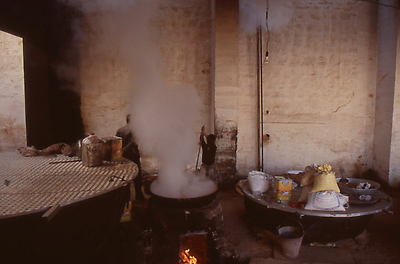
It is said, that a son died in a local royal family. Being in a trance, Karni went into the subterranean kingdom of the god of death Yama, asking him to release the dead boy and to allow him to return to earth to life. However, Yama denied it, because the psychic identity of the deceased son of the prince had already entered another body and was reborne there.
As a consequence, Karni made an oath that nobody from her district would enter the realm of death of Yama after his death. The souls of dead people would find rebirth as rats. If they finished their animal lifes, they would appear in further reincarnations as highly respected ballad singers and musicians in Rajasthan: There, all Rajputs have bards in the courts of their principalities until today. (Rajputs are members of one of the patrilineal clans of the Indian subcontinent. Rajput rulers dominated many regions of central and northern India including the eastern regions of present-day Pakistan.)
According to the religious conviction of the pilgrims of Deshnoke, human beings reborn in rats live in the Temple of Deshnoke. The temple is said to be around 600 years old. Its precious decoration is mainly due to the Maharaja Ganga Singh of Bikaner (1880-1943). The figural pictures show the environment of the family of the High God Shiva. Karni Devi is regarded as the personification of one of the heroic, Amazonian wifes of Shiva. Therefore she also carries his trident as an attribute and personifies his wife Durga with a lion, his wife Amba with a tiger. Her holy picture is a crude bas-relief in a niche of the temple which is always covered with awe-inspiring red colour. Rats are cavorting at her feet and are eating food prepared in a seperate kitchen. Rats also always get to drink milk.
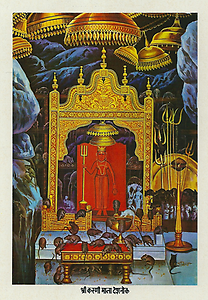

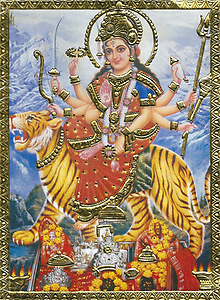
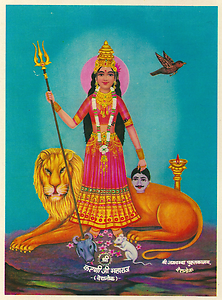



Nowadays there are around 20 000 rats living there. The temple is also accessible to visitors who are not Hindus. However, the most holy place is closed to them. Hindus consider it a wonderful piece of luck when they discover an albino amoung the numerous rats. The writer of this article discovered an albino rat and was asked by many pilgrims to send them a picture of it.

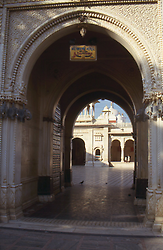









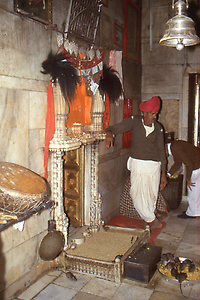

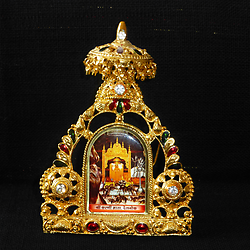

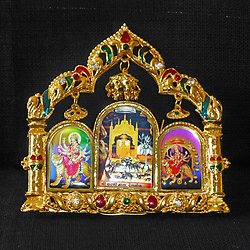

All pictures were taken by the author and are in his archive, often called "archive picture flood". The objects are part of the ethnological collection of Mr.Jontes.